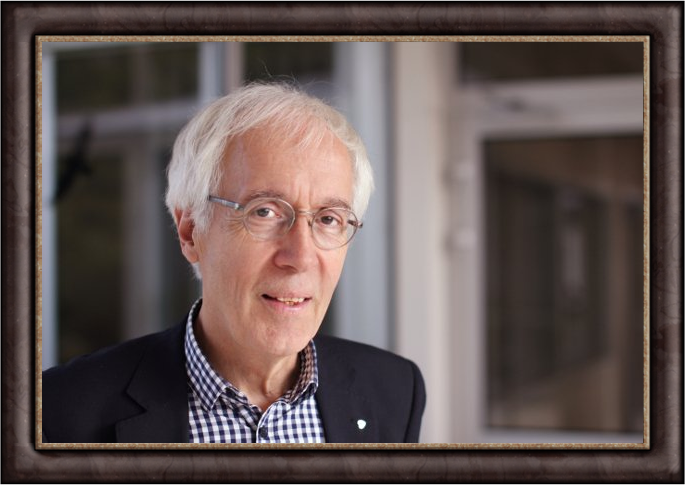Q10 against heart failure
Danish cardiologist:
"We have seen very promising results with coenzyme Q10 in heart failure"
The newsletter Pharma News carried an interview with the Danish lead scientist Chief Physician Svend Aage Mortensen, MD, from The Heart Center of Copenhagen University Hospital. Dr. Mortensen was the leading researcher on the Q-Symbio study, published in december 2014 in one of the top scientific journals on cardiology, the Journal of the American College of Cardiology.
Given clinical trial results that show a 43% lower mortality rate and significantly fewer hospitalizations among heart failure patients who were given coenzyme Q10 as an add-on to their conventional drug regimen, cardiologists may have a new adjuvant treatment for chronic heart failure.
The interview
What was the most spectacular result from the Q-symbio study?
In my opinion, it was the substantially lower mortality rate among patients who were treated with coenzyme Q10. There were nearly half as many heart-related deaths in the Q10 group compared with the placebo group. In the Q10 group, we also observed a similar reduction in the need for hospitalization due to worsening of heart failure symptoms. Finally, the patients in the Q10 group had significant improvements of their symptoms (assessed by means of the NYHA classification*) compared with the placebo group.
Do you believe there is a future role for coenzyme Q10 in the treatment of heart failure?
I definitely think that the results we have seen are extremely positive and promising. In fact, I would extend that to saying that, with this new therapy form, we are looking at a shift of paradigm in the treatment of chronic heart failure.
In what way does coenzyme Q10 differ from the conventional heart failure treatment?
We are looking at entirely different mechanisms of action in heart failure treatment. Conventional heart failure treatment focuses on inhibiting certain hormonal factors that appear to be activated as part of the disease and that strain the heart. For instance, this type of therapy blocks elevated noradrenalin levels. The use of coenzyme Q10 is an entirely different matter. Here, you support processes that are relevant for the energy metabolism in cells, thereby supplying the cardiac muscle with increased strength.
Is coenzyme Q10 therapy to be viewed as medical therapy, or is it really just a natural way of helping the heart muscle to improved functioning?
Supplementing with coenzyme Q10 compensates for a deficiency inside the failing heart. Coenzyme Q10 improves the heart's energy output, thereby blocking the theoretical vicious circle in heart failure. I agree that coenzyme Q10 is a natural and seemingly supportive substance, but it does have medical and pharmacological properties when taken in doses of three times 100 mg daily, like we did in the Q-symbio study.
If you compare conventional heart failure therapy with the use of coenzyme Q10, would either of the two come out as the ideal treatment?
It is quite difficult to make such a clear distinction. Conventional therapy with e.g. ACE inhibitors and beta blockers has documented that is reduces mortality in heart failure, but there are side effects. The patients in Q-symbio had utilized the effect of conventional treatment, yet there was substantially improved survival in the coenzyme Q10 group. In contrast, the use of other heart-stimulating remedies in heart failure has produced disappointing results. The oldest and most recognized remedy is digitalis (digoxin) that lowers the hospitalization rate in heart failure but does not improve survival. Also, digoxin has a very narrow therapeutic scope. Coenzyme Q10 is shown to be safe and without side effects at the same time as being an effective supplement to conventional heart failure therapy, just like we clearly saw in the Q-symbio study.

Associate Professor Dr. Med. Svend Aage Mortensen, Head of the Q-symbio study.
*) NYHA CLASSES
NYHA is the abbreviation for the New York Heart Association. The NYHA classification is an official ranking system used globally that divides heart failure patients in four individual categories depending on the severity of their symptoms.
Mortality rates rise and fall in line with the rise or fall of the NYHA class. A successful heart treatment could cause a patient to shift one or more NYHA classes back. For example, the patient classification could rise from NYHA IV to NYHA III or II. The Q-symbio study included only patients with severe heart problems, ie. NYHA III and IV.
- NYHA Class I

The weakening of the heart is not felt during normal activity, but can be measured with instruments
- NYHA Class II

Shortness of breath and/or fatigue in moderate to harder physical exertion, for example. climbing stairs to more than the second floor
- NYHA Class III

Shortness of breath and/or fatigue of mild physical exertion such as climbing stairs to less than the second floor or at very modest activity, for example taking clothes off and on
- NYHA Class IV

Shortness of breath and/or fatigue at rest
THE Q-SYMBIO STUDY
- Type of Q10 used
Capsules with ubiquinone (Myoqinon / Bio-Qinon) dissolved in vegetable oil in soft gelatin capsules
- Q10 Dosage
100 mg 3 times a day
Q-SYMBIO VIDEO
Q-symbio - What scientists are discovering about Q10
This short YouTube video explains the study.
Click here!
